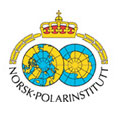The scientific principles of the project
Increase of temperatures and loss of sea ice has have dramatically changed the Arctic’s physical system. One of the key factors driving the loss of sea-ice is the ice-albedo feedback resulting in more solar energy accumulated into the surface ocean. Colored dissolved organic matter (CDOM) is a key factor affecting the vertical entrapment of heat and light availability for primary production in the Arctic Ocean. Recent studies in the western Arctic have shown that CDOM can result in over 30% more solar heat entrapment in the surface ocean compared to other open-ocean regions, contributing significantly to accelerated sea-ice melt. Very little is known about the distribution, sources and transformations and feedbacks related to increased CDOM oncentrations in the European Arctic. In this project we propose to carry out an extensive study to understand the composition and sources of CDOM and the role of CDOM (and other optically active substances) in the fate of solar energy in the Nordic Seas and European Arctic, and how it contributes to the solar heating of the upper ocean and contributes to sea-ice melt, penetration of harmful ultraviolet (UV) light and light availability (UV and PAR) for primary production. By combining forces from groups with complementing experience and expertise in geochemical tracers, physical oceanography, marine optics and sea-ice geophysics, in Arctic and sub-Arctic seas, and provided the access to the Arctic, and state-of-the-art instrumentation (both in the lab and field) we are set to meet this challenging task. Expected results shall provide new information needed to understand on forcing and feedback mechanisms related with optical and chemical properties of CDOM on radiation budget, heat accumulation and carbon cycle in Nordic Seas and European Arctic sector. Results will provide baseline for sensitivity studies in climatic models testing different scenarios in changes of CDOM concentrations.
The project is scheduled for 36 months and is structured into six work packges:
- 1 Field surveys for determination of CDOM, inherent and apparent optical properties distribution in the Nordic Seas and European Arctic
- 2 Hydrography of optically active substances in the Nordic Seas and Arctic waters
- 3 Sources and transformations of CDOM in different water masses in Nordic Seas - assessment with use of the Excitation Emission Matrix spectroscopy
- 4 Contribution of optically active substances to upper ocean heating in the Nordic Seas
- 5 Role of CDOM and bio-optics in Arctic sea ice optical properties and melting
- 6 Data synthesis, outreach and dissemination
The main objectives of CDOM-HEAT project are:
- 1 Measure the current level of absorption of natural light field by CDOM and other significant optical constituents in Nordic Seas and European Arctic to quantify the contribution of CDOM to total absorption and to form a baseline in future Climate Change scenarios.
- 2 Establish the contribution of local sources of CDOM to the total budget of CDOM in Nordic Seas and European Arctic.
- 3 Discriminate the sources and sinks of CDOM in the study area, especially local sources related to sea ice melt and ice edge phytoplankton blooms, based on optical signatures of CDOM and water mass analyses with use of the state of the art methods in absorption and fluorescence spectroscopy and data processing with Multivariate Statistics – Parallel Factor Analysis Model.
- 4 Link inflow and outflow of CDOM in the European Arctic with water masses to estimate a budget of CDOM for the region.
- 5 Established empirical links between the CDOM, DOC, POC and optical proxies to formulate the basis for monitoring of different carbon fluxes with cost efficient optical measurements with increased spatial and temporal coverage (e.g. future applications of oceanographic gliders or Bio-Argo drifters floats, and development of satellite algorithms for retrieval CDOM absorption and DOC concentration).
- 6 Quantify the contribution of CDOM to heating the surface ocean and to melting of sea ice in the study area.
- 7 Estimate the effect of changes and variability CDOM on primary production in the study region by use of bio-optical models


